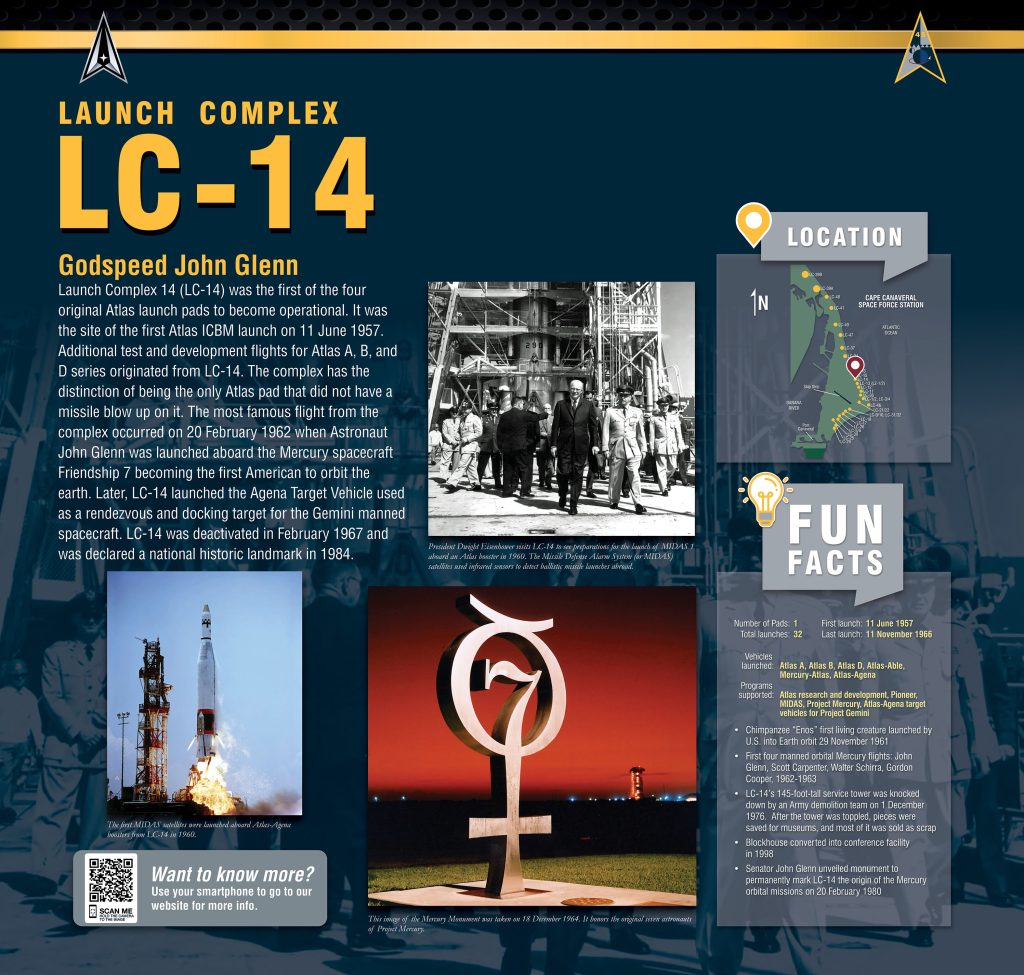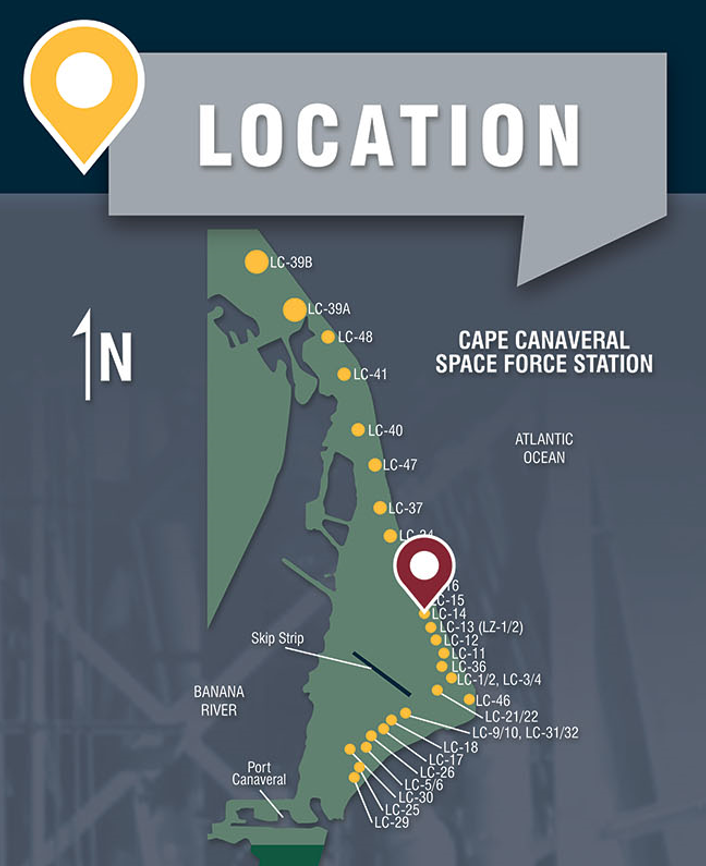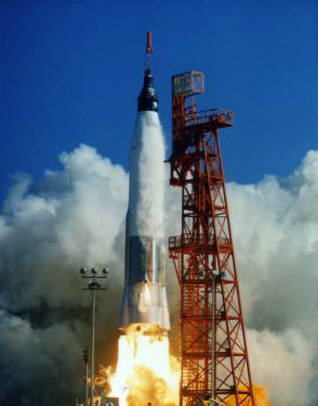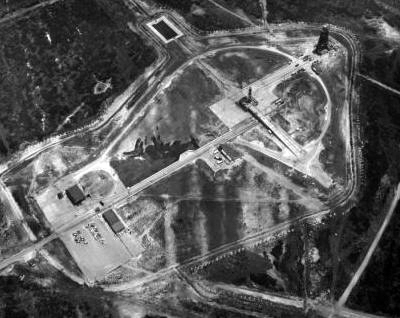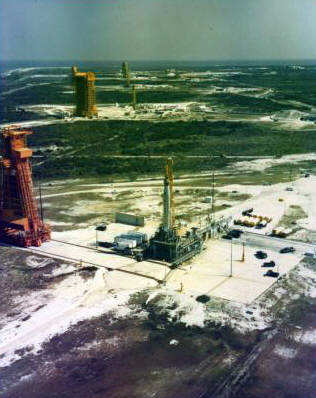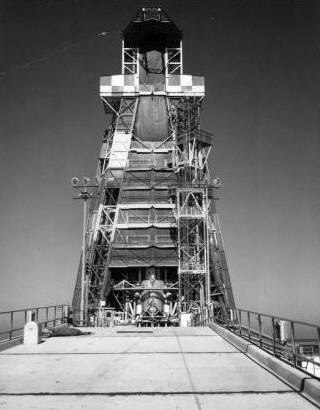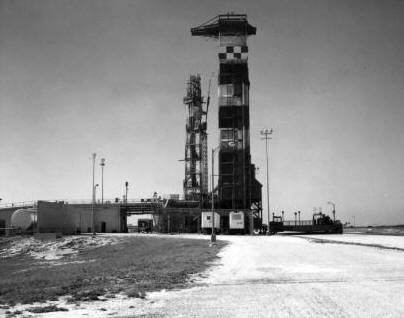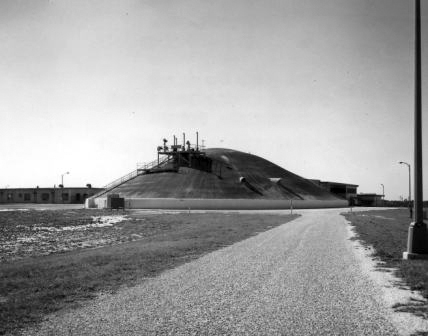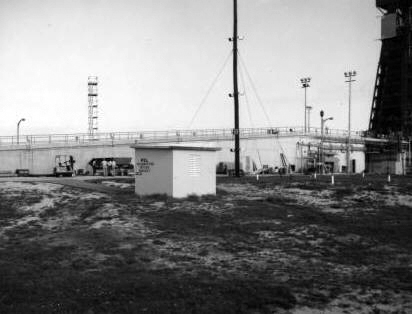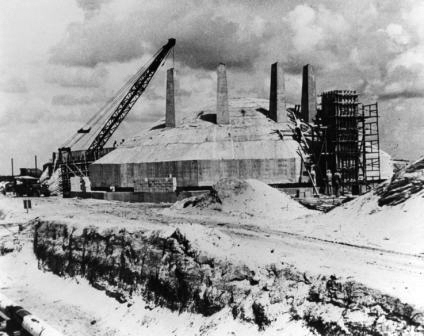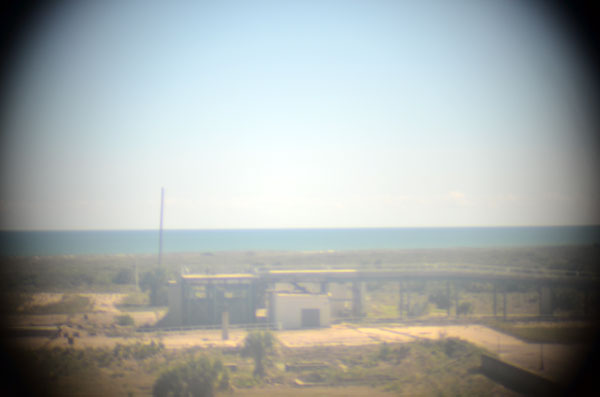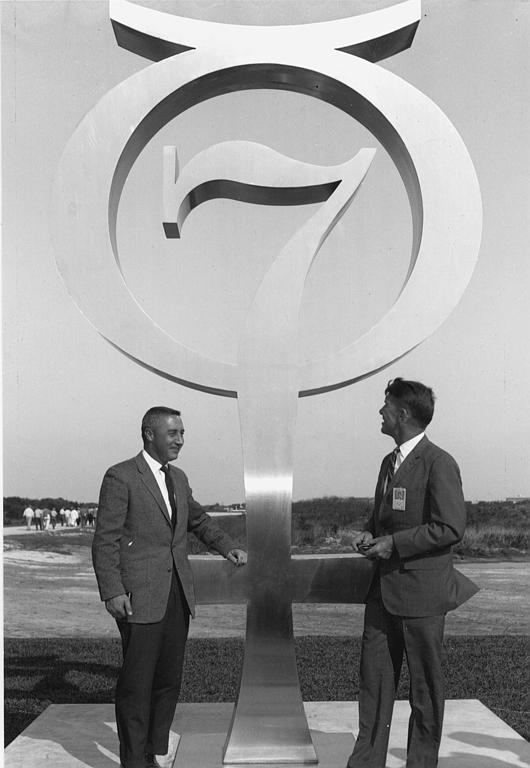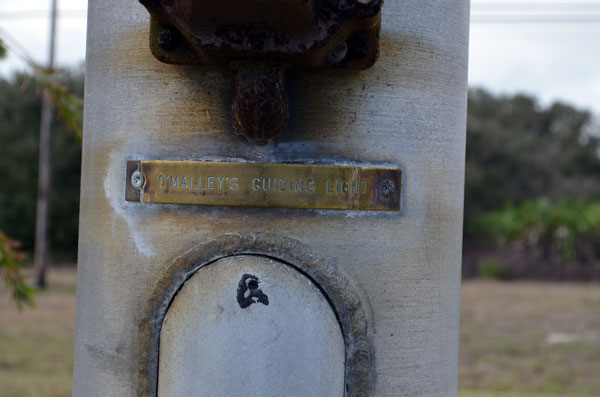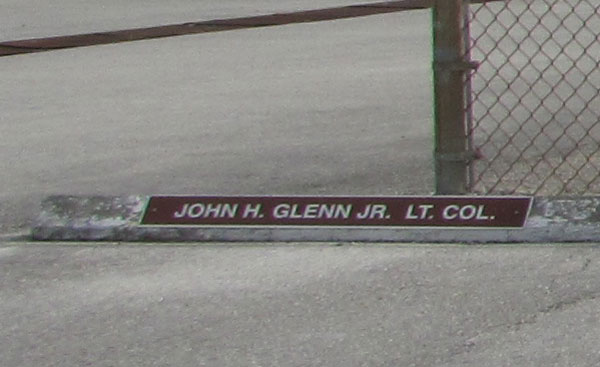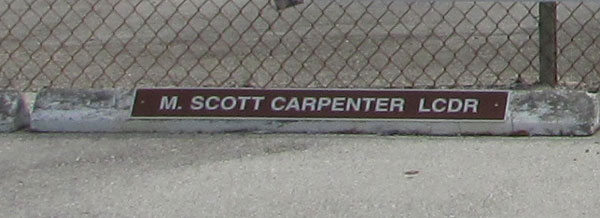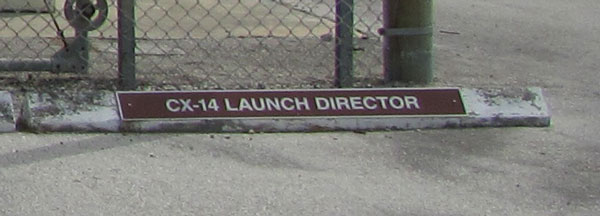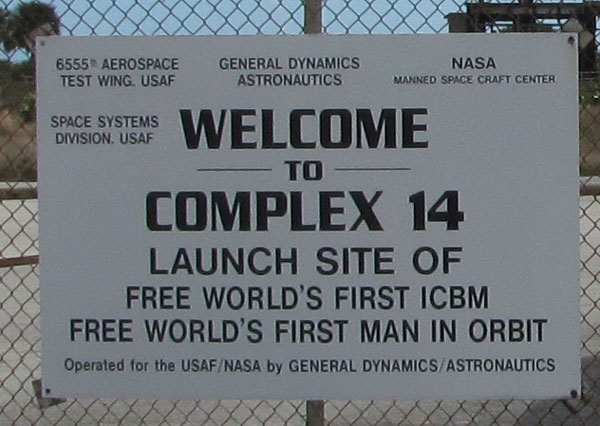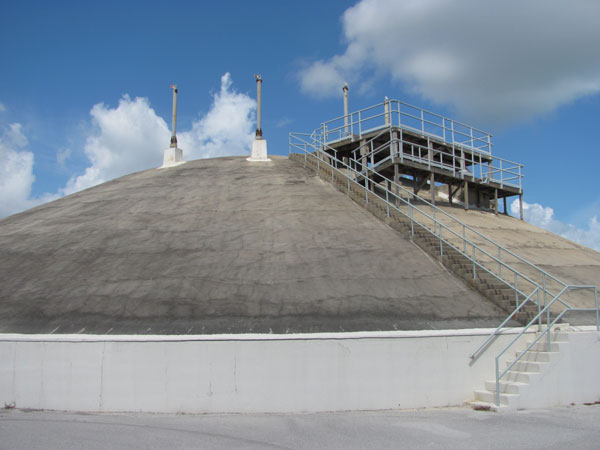Overview
Systems
- Atlas A
- Atlas B
- Atlas D
- Atlas Able
- Atlas Agena A and D
- Atlas Mercury
Other Programs
- Mercury
- Gemini Target Vehicle
- MIDAS
Cost:
- Total $4,308,000
- Blockhouse $821,989
- Launch stand and ramp area $777,074
- Project Mercury alterations $1,500,000
Launch Complex 14 Highlights
- January 1956 – U.S. Army Corps of Engineers initiated construction
- January 1957 – Occupancy of the facility
- August 1957 – Air Force accepted the launch complex
- The launch complex consists of a launch stand and ramp and a blockhouse. The ramp was 24′ wide and 92′ long gradually increased to 22′ high to the launch stand, 60′ wide and 78′ long and supported the umbilical mast, which is 84’6″ above the launch stand. The launch pad building was 57′ by 20′ and extended under the ramp. The service structure consists of 14 movable decks of steel framework trapezoidal in shape, 154’8″ high. Rails were used to move the structure 300′ from the stand for launch. The blockhouse is about 750′ from the launch stand and is 60′ in diameter. Liquid oxygen storage tank contains 28,000 gallons and RP-1 tank 16,000 gallons
- 11 June 1957 – 5 April 1958 – Five Atlas A launched
- 14 September 1958 – 16 January 1959 – Three 3 Atlas B launches
- 19 May 1959 – 22 October 1960 – Four Atlas D launches
- 26 November 1959 – Unsuccessful Atlas Able launch
- 1959-1960 – Minor modifications to the launch complex were made to support the Mercury Program — emergency egress tower, gantry modified to accommodate the escape rocket tower, and white room.
- 9 September 1959 and 29 July 1960 – Two unmanned Mercury Atlas capsule missions
- 26 February 1960 and 24 May 1960 – Two Atlas Agena A Missile Defense Alarm System (MIDAS) sponsored by ARPA were launched
- 21 February, 25 April and 13 September 1961 – Three successful unmanned Mercury Atlas launches
- 29 November 1961 – Mercury Atlas launched Chimpanzee “Enos”
- Four manned Atlas Mercury launches, Friendship 7 (20 February 1962); Aurora 7 (24 May 1962); Sigma 7 (3 October 1962); Faith 7 (15 May 1963)
- 1963 – 1965 – Modified for the Atlas-Agena with new 101′ umbilical tower, Agena fuel system, spacecraft clean room and dismantled the egress tower to accommodate the Agena-Gemini target vehicle in 1964-1965 time frame.
- 10 November 1964 – Mercury 7 monument dedicated, 13 feet high, stainless steel, dedicated to the Mercury Project. Time capsule buried in 1964 beneath the monument to be opened in the year 2464. The time capsule contains reports, photographs, a movie, and other memorabilia designed to give the historians of the day a glimpse of man’s first steps in space. Mercury memorial marble monument on launch ramp.
- 25 October 1965 and 11 November 1966 – Seven Atlas Agena D target vehicles for manned Titan Gemini missions
- Supported 32 Atlas and Atlas Agena launches including four manned Atlas Mercury missions and 7 unmanned Gemini target vehicles launches
- After 11 November 1966 – Pad became inactive
- February 1967 – Deactivated
- 31 October 1973 – Abandoned in place
- 1 December 1976 – Demolition of service tower
- April 1984 – Declared National Historic Landmark
- 1998 – Blockhouse was restored and converted to meeting space to commemorate the 35th Anniversary of the final Mercury flight
Related Pages:
More Cape Canaveral Facilities